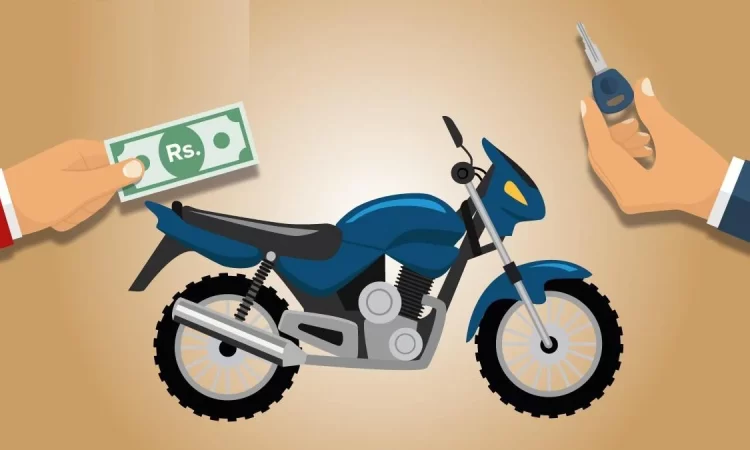
Buying a used motorcycle, especially a pre-owned Harley, is an exciting process. Whether you’re a seasoned rider or a first-time buyer, ensuring you have all the necessary documents in order is crucial for a smooth transaction. Proper documentation not only protects you legally but also ensures that you can register and ride your new motorcycle without any issues. In this guide, we’ll walk you through the essential documents you’ll need to buy a used motorcycle, helping you navigate the process with confidence.
1. Proof of Identity
When purchasing a pre-owned Harley or any other motorcycle, the first document you’ll need is proof of identity. This is required by both the seller and the Department of Motor Vehicles (DMV) when you register your new bike.
Acceptable Forms of Identification
- Driver’s License: A valid driver’s license is the most common form of identification. It confirms that you are legally allowed to operate a motorcycle and provides your personal information for the transaction.
- Passport: If you don’t have a driver’s license, a valid passport can serve as an alternative form of identification.
- State ID Card: For those who don’t drive, a state-issued ID card is also acceptable as proof of identity.
Why It’s Important
Proof of identity is required to transfer the title and register the motorcycle in your name. It ensures that all legal documents are correctly attributed to the new owner, helping to prevent fraud and legal disputes.
2. Title Certificate
The title certificate, also known simply as the “title,” is perhaps the most critical document in the process of buying a used motorcycle. The title proves ownership of the motorcycle and is necessary for transferring that ownership from the seller to the buyer.
What to Look for in a Title
- Clear Title: Ensure that the title is clear, meaning that there are no liens or claims against the motorcycle. A clear title indicates that the seller fully owns the bike and has the legal right to sell it.
- Matching VIN: The Vehicle Identification Number (VIN) on the title should match the VIN on the motorcycle. This number is a unique identifier for the vehicle and is essential for confirming its identity.
- No Salvage Title: Be cautious if the title is marked as “salvage.” This means the motorcycle has been declared a total loss by an insurance company, usually due to significant damage. While salvage bikes can be repaired and returned to the road, they often come with hidden issues and lower resale value.
Why It’s Important
The title is the legal document that transfers ownership of the motorcycle to you. Without a properly signed and notarized title, you won’t be able to register the motorcycle in your name, and you could face legal challenges regarding ownership.
3. Bill of Sale
The bill of sale is a document that records the details of the transaction between the buyer and seller. While not always required by law, it’s highly recommended to have a bill of sale for your records.
Key Information on a Bill of Sale
- Buyer and Seller Information: The full names, addresses, and contact information of both parties.
- Description of the Motorcycle: The make, model, year, and VIN of the motorcycle.
- Purchase Price: The agreed-upon price for the motorcycle.
- Sale Date: The date on which the transaction takes place.
- Signatures: Both the buyer and seller should sign the bill of sale. In some states, a notarized signature may be required.
Why It’s Important
The bill of sale serves as proof of the transaction and can protect both the buyer and seller in case of disputes. It provides a written record of the agreement, including the purchase price and the condition of the motorcycle at the time of sale.
4. Release of Liability
When you buy a used motorcycle, the seller is usually required to submit a release of liability form to the DMV. This document informs the DMV that the seller is no longer responsible for the motorcycle, which helps to protect them from any legal or financial obligations after the sale.
What the Release of Liability Includes
- Seller Information: The name, address, and driver’s license number of the seller.
- Buyer Information: The name and address of the buyer.
- Motorcycle Information: The make, model, year, and VIN of the motorcycle.
- Sale Date and Price: The date the motorcycle was sold and the sale price.
Why It’s Important
The release of liability ensures that the seller is not held responsible for any accidents, violations, or other incidents involving the motorcycle after the sale. It’s a crucial step in legally transferring ownership and protecting both parties.
5. Odometer Disclosure Statement
An odometer disclosure statement is required in many states when selling or buying a used motorcycle. This document records the mileage on the motorcycle’s odometer at the time of sale and is necessary for confirming the vehicle’s mileage history.
What to Include in the Odometer Disclosure
- Odometer Reading: The exact mileage displayed on the odometer at the time of sale.
- Certification: A statement certifying that the mileage is accurate to the best of the seller’s knowledge. If the odometer reading is not accurate, this must be disclosed.
- Signatures: Both the buyer and seller must sign the odometer disclosure statement.
Why It’s Important
Accurate mileage is a critical factor in determining the value and condition of a pre-owned Harley. The odometer disclosure helps prevent odometer fraud, where the mileage is tampered with to make the motorcycle appear less used than it actually is.
6. Proof of Insurance
Before you can legally ride your newly purchased pre-owned Harley on the road, you’ll need to have motorcycle insurance. Most states require proof of insurance before you can register the motorcycle.
What to Include in Proof of Insurance
- Insurance Card: Your insurance provider will issue a card that includes your policy number, coverage details, and expiration date.
- Coverage Details: Ensure that your insurance policy meets the minimum coverage requirements for your state, which typically include liability coverage for bodily injury and property damage.
Why It’s Important
Riding without insurance is illegal in most states and can result in hefty fines, license suspension, and other penalties. Additionally, insurance protects you financially in case of an accident or theft.
7. Loan or Lien Release (If Applicable)
If the seller still owes money on the motorcycle, there may be a lien on the title. In this case, you’ll need a loan or lien release document from the lender stating that the loan has been paid off and the lien is released.
What to Include in a Lien Release
- Lienholder Information: The name and contact information of the lender or lienholder.
- Motorcycle Information: The make, model, year, and VIN of the motorcycle.
- Statement of Release: A statement indicating that the loan has been paid in full and the lien is released.
- Signatures: The signature of an authorized representative of the lienholder.
Why It’s Important
A lien release is necessary to ensure that you receive a clear title without any outstanding claims. Without this document, you may have difficulty registering the motorcycle or selling it in the future.
8. Emissions Certificate (If Required)
In some states, motorcycles are required to pass an emissions inspection before they can be registered. If the state where you’re buying the pre-owned Harley requires this, you’ll need an emissions certificate showing that the bike meets the necessary environmental standards.
What to Include in an Emissions Certificate
- Test Results: The results of the emissions test, indicating whether the motorcycle passed or failed.
- Certificate Number: A unique number identifying the test and its results.
- Expiration Date: The date the emissions certificate is valid until.
Why It’s Important
An emissions certificate is necessary to complete the registration process in states where emissions testing is required. Riding a motorcycle that doesn’t meet emissions standards can result in fines and the inability to register your bike.
9. Vehicle History Report (Optional, but Recommended)
While not a mandatory document, a vehicle history report can provide valuable information about the pre-owned Harley you’re considering. This report typically includes details about past ownership, accident history, and any title issues.
What’s Included in a Vehicle History Report
- Accident History: Information about any reported accidents or damage.
- Title Status: Details about the title, including whether it’s clear, salvaged, or rebuilt.
- Odometer Readings: Recorded mileage from various points in the motorcycle’s history.
- Service Records: Documentation of past maintenance and repairs (if available).
Why It’s Important
A vehicle history report helps you make an informed decision by revealing potential red flags that could affect the motorcycle’s value or safety. It’s an extra layer of protection that can prevent costly surprises after the purchase.
Conclusion
Buying a pre-owned Harley can be a rewarding experience, offering the thrill of owning an iconic motorcycle at a more affordable price. However, to ensure the transaction goes smoothly and legally, it’s crucial to have all the necessary documents in order. From the title certificate and bill of sale to proof of insurance and a possible lien release, each document plays a vital role in protecting your interests and ensuring that you can enjoy your new ride without any hassles.
By being well-prepared and thorough in gathering these documents, you can confidently complete the purchase of your pre-owned Harley and hit the road knowing that everything is in order. Safe riding!




